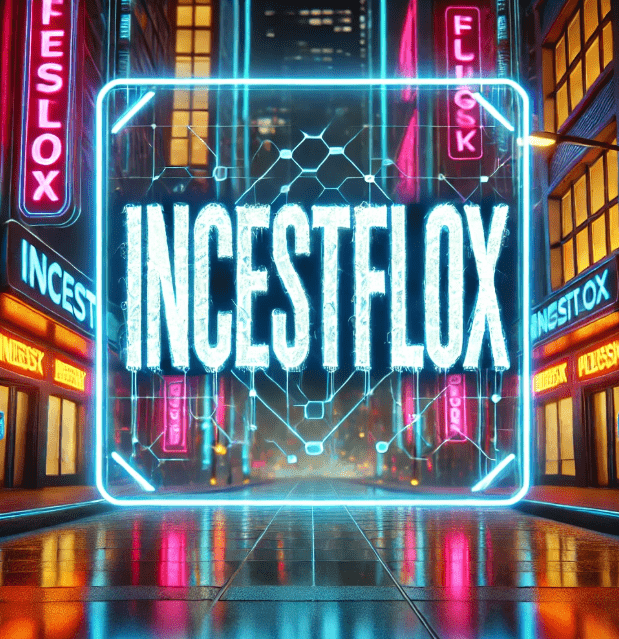
Understanding the Complexities of “Incestflox”
The term incestflox is a conceptual amalgamation that invites exploration into deeply rooted societal taboos, ethical dilemmas, and the psychological ramifications of familial relationships gone awry. While the term itself is not widely recognized in academic or mainstream discourse, it serves as a provocative lens through which to examine themes of genetic manipulation, familial bonds, and the moral boundaries of human interaction. This article delves into the hypothetical implications of “incestflox,” weaving together interdisciplinary perspectives to create a comprehensive narrative that challenges readers to reflect on the intersection of science, ethics, and human behavior.
The Conceptual Framework of “Incestflox”
To unpack “incestflox,” we must first deconstruct its components. The prefix incest refers to sexual relations between close family members, a universally taboo subject with profound cultural, legal, and psychological implications. The suffix flox is less straightforward but may derive from scientific jargon, such as “floxed genes” in genetic engineering, where specific DNA sequences are flanked by recombinase target sites for controlled manipulation. Combining these elements, incestflox could hypothetically represent a scenario where genetic or societal mechanisms are engineered to address—or inadvertently exacerbate—the consequences of incestuous relationships.
This speculative framework opens a Pandora’s box of ethical questions. Could genetic technologies be misused to “correct” or conceal the biological outcomes of incest? What societal safeguards exist to prevent such scenarios? By exploring these questions, we confront the uneasy relationship between scientific advancement and moral responsibility.
The Ethical Quandaries of Genetic Intervention
One of the most pressing issues tied to incestflox is the ethical dimension of genetic manipulation. In recent decades, breakthroughs like CRISPR-Cas9 have revolutionized our ability to edit genes, offering hope for eradicating hereditary diseases. However, these technologies also pose risks if weaponized for unethical purposes. Imagine a dystopian future where “incestflox” refers to a gene-editing tool designed to mask the genetic anomalies often associated with inbreeding. While this might seem like a solution to prevent health complications, it raises alarming questions:
Who Decides?
The power to alter human DNA places immense responsibility on scientists, policymakers, and corporations. If a technology like incestflox existed, who would regulate its use? Would it be accessible only to those with wealth and privilege, exacerbating social inequality?
Moral Absolution vs. Accountability
Genetic “fixes” could inadvertently normalize harmful behaviors by removing biological consequences. If incestuous relationships no longer resulted in genetic disorders, would society become more permissive of such acts? This challenges the very purpose of ethical boundaries.
Unintended Consequences
History shows that tampering with natural processes often leads to unforeseen outcomes. Masking genetic flaws might delay immediate health issues but could introduce new vulnerabilities in future generations.
These dilemmas underscore the need for robust ethical frameworks to govern genetic research. The hypothetical incestflox serves as a cautionary tale, urging us to balance innovation with humility.
The Psychological Impact of Familial Betrayal
Beyond genetics, incestflox symbolizes the psychological trauma inflicted by incestuous relationships. Survivors of incest often grapple with lifelong emotional scars, including guilt, shame, and fractured identities. The term could metaphorically represent the “floxing” or scrambling of one’s psychological fabric due to betrayal by trusted family members.
Trust and Betrayal
Families are meant to be sanctuaries of trust. When this trust is violated, victims experience a unique form of betrayal that can distort their worldview. The emotional “floxing” leaves individuals struggling to rebuild their sense of safety and self-worth.
Intergenerational Trauma
Incestuous abuse often perpetuates cycles of trauma. Children born from such unions may face stigma, identity crises, and genetic health issues, creating a ripple effect across generations.
Healing and Resilience
Addressing these wounds requires compassionate mental health interventions. Therapy, support groups, and legal justice are critical to helping survivors reclaim their narratives.
By framing incestflox as both a genetic and psychological phenomenon, we highlight the interconnectedness of body and mind in healing.
Legal and Societal Safeguards
The term incestflox also invites scrutiny of legal systems tasked with preventing and addressing incest. Laws vary globally: some nations criminalize all consensual incestuous relationships, while others focus on protecting minors and punishing abuse. A “flox” in this context might refer to gaps in legislation that allow perpetrators to evade accountability.
Legal Loopholes
In jurisdictions where incest laws are ambiguously worded or rarely enforced, survivors may struggle to obtain justice. Strengthening legal frameworks is essential to closing these loopholes.
Cultural Relativism
Attitudes toward incest differ across cultures. In some communities, arranged marriages between cousins are normalized, while others view any familial intimacy as taboo. Policymakers must navigate these nuances sensitively.
Preventive Education
Combating incest requires proactive measures, including education on healthy relationships, consent, and boundaries. Schools and communities play pivotal roles in fostering environments where abuse is less likely to occur.
The Role of Technology in Prevention and Support
While incestflox initially conjures dystopian visions, technology can also be a force for good. AI-driven platforms, for instance, could identify at-risk individuals through behavioral patterns or genetic screenings, enabling early intervention. Telehealth services might provide discreet support to survivors in oppressive environments. Blockchain technology could ensure anonymous reporting of abuse while protecting victims’ identities.
However, these tools must be deployed ethically. Surveillance technologies risk infringing on privacy, and algorithmic biases could disproportionately target marginalized groups. The challenge lies in harnessing innovation to empower, not control.
Societal Responsibility and Collective Healing
Addressing the specter of incestflox demands collective action. Families, institutions, and governments must collaborate to create ecosystems of accountability and care.
Community Vigilance
Neighbors, teachers, and healthcare providers are often the first to notice signs of abuse. Training these stakeholders to recognize and report red flags can save lives.
Art and Storytelling
Literature, film, and art have long been vehicles for confronting taboo subjects. By sharing survivor stories responsibly, society can foster empathy and dismantle stigma.
Global Collaboration
Incest and genetic manipulation are not confined by borders. International bodies like the United Nations must spearhead initiatives to harmonize legal standards and share best practices.
Conclusion: Navigating the Future with Wisdom
The hypothetical concept of incestflox serves as a mirror, reflecting humanity’s capacity for both creation and destruction. As we venture further into the realms of genetic engineering and AI, we must ask ourselves: How do we wield these tools without losing our moral compass?
The answer lies in interdisciplinary dialogue—bridging science, ethics, law, and psychology—to ensure that progress serves the greater good. Survivors of incest remind us of the resilience of the human spirit; their stories compel us to build a world where technology heals rather than harms, and where every individual is afforded dignity and protection.
By engaging with challenging concepts like incestflox, we reaffirm our commitment to a future guided not by fear, but by compassion and wisdom. Let this be the legacy we strive for.
